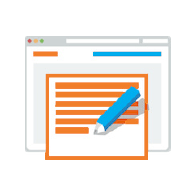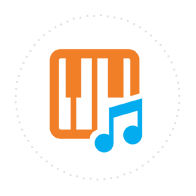Musika Quick Stats
24 Years
Since We Started
41,456+
Happy Customers
10,769
Cities with Students
3,123
Teachers in Network
Lesson Special - Up to 20% OFF! Get Started Now with a Risk-Free Trial!
Here are just a few of the many teachers offering Piano lessons in Arlington . Whether you are looking for beginner guitar lessons for your kids, or are an adult wanting to improve your skills, the instructors in our network are ready to help you now!
Instruments: Piano
I am a motivated and adaptable instructor, with patience to students. Since I had been playing piano accompanying at Peabody Preparatory for three years, I had observed multiple teaching styles with different instructors ( includes private lessons and group classes). The two most important things I found out is to help students explore their love in music and let them enjoy when they are playing their instruments. Also, setting goals and help them achieve their goals is an efficient way for learning piano. Read More
Instruments: Piano
For beginners, I usually start with John Thompson's Easiest Piano Course. Then, I progress onto Dozen a Day, and finally Hanon and Czerny. For the advanced students, I start right from Hanon and Czerny, and go onto Burgmuller. If there is time, I will add on Rebikov for hand separation practice. Repertoire is often chosen based on the student's ability at the time. I will most likely start with repertoire from Easy Classics to Modern, and later add on repertoire that matches the student's style (such as jazz or R&B). Read More
Instruments: Piano
I like the Prep course books for children and Alfreds adult educaion book for adult beginners. I use Hanon and Picsna for the technique. Read More
Instruments: Piano Keyboard
I am also a Pianist at a Lutheran Church. Below are a few highlights of my qualifications and experience: I began studying the piano at the age of 6 at Music School in Russia St. Petersburg I earned a Master’s degree in Music Education and Curriculum Development from St. Petersburg state Pedagogical Institute of Herzen – St. Petersburg, Russia, and Bachelor’s Degree with Major in Music Theory from Music College of Rimsky-Korsakov in St. Read More
Instruments: Piano Voice
I have been involved with music for as long as I can remember. My first love was singing, and I still enjoy singing today. My first instrument was the accordion, after which I moved on to piano and keyboards. I remember my piano teacher, Mr Scholl, was a neighbor and he would come to my house for lessons. I had no idea that years later as an adult I would be "paying it forward". Read More
Instruments: Piano Keyboard
People are learning piano happily is my biggest wish. I an not willing to make piano learning to be as a pressure for my students. Therefore, I always find the best way to deal with the difficult part of the piece and make it interesting. I like assign homework in different styles: writing, playing, singing, clapping, etc. I always find new ways to make piano playing amusing especially when I introduce new concepts. Read More
Instruments: Piano Organ Keyboard
For young beginning students most of the time I like to use John Thompson's ''Easiest piano course'' as a practicing book,for their hands position and finger velocity I use ''A Dozen a Day'' and also I introduce them to music notation,spelling and writing with various Theory books . For older and adult beginners I choose different books. I have my own customized methods to teach different age groups and personalities.The most important thing is that a music lesson should be fun, not a burden. Read More
Instruments: Piano Voice
What advice do you have about practicing effectively?
Effective practice goes beyond simple repetition. When you sit down to practice, start with something you enjoy playing {or singing} as part of your warm-up routine, then start your actual work.
If you're starting a new piece, begin by looking through the music - take note of the rhythm, key signature, accidentals, etc., then slowly sight-read through the piece. Divide the piece into sections and take it one section at a time. When working on a section, play through it, then decide which chunks need the most focus - it can be as long as a phrase or as short as a measure or two, or even just a motive. Figure out what you can do to make that small section better, be it fingering changes, hands-separate practice, working with rhythms, etc.
Eventually, you can piece the larger sections together and get something great!
How do I know if my child is ready to start lessons?
If your child shows a genuine interest in making music, they are ready. Depending on the age of your child, talk to them about starting lessons, and ask them questions, such as: How much time do they have to practice each day/week? Do they understand that it will take time and practice to become proficient? What are their musical goals? What kind of music do they want to learn? If they can answer some of these questions, they should be ready to succeed in music. A trial lesson is a great way for both the student and the teacher to determine if the student is ready.
Do you use specific teaching methods or books? (Ex: Alfred, Bastion, Suzuki, Hal Leonard) Why did you choose them if you did?
I like to use the Bastien Piano Basics series for my young piano students, because it is what I primarily learned with. I also like the Piano Adventures series; over the past year or so I've become pretty familiar with the series, and it has a lot of good things to offer - the pacing and organization is great. For adults, the Alfred piano course is good, though depending on the capabilities of older students, I may just teach through repertoire. For very young students, adding a bit of the Kodaly method into the lessons helps as well - using folk songs/singing to teach musical concepts.
Does music run in your family? Tell us a little about your musical family members.
Music definitely runs in my family. My mom's family is very large - there are 11 kids - and all of them sing and/or play an instrument, and just about all of them have been in a band at some point in their life. My mom is a singer/songwriter with multiple recordings. My dad's parents toured the country listening to polka bands, but my dad ended up getting into drumming. All of my 7 siblings are musical, too: we have pianists, singers, a drummer, a guitarist, and a potential violinist. We love singing together and making up goofy songs with each other.
24 Years
Since We Started
41,456+
Happy Customers
10,769
Cities with Students
3,123
Teachers in Network
Trusted as the industry leader, for over 21 years the teachers in our network have been providing Piano lessons in Arlington to students of all ages and abilities.
We'll then reach out to the teachers for you.
Schedule the risk-free trial lesson directly with the teacher.
Continue with that teacher or try someone else.








Daniel
I am interested in in-home piano lessons for my son (7), daughter (9), and I. We would be able to take a lesson(s) every other week. We have a piano at home.
Amy
I am 37 years old and would like to learn to play the piano. I have zero background in piano and would like to find a teacher who could help me as an adult student!
Cat
I have an 11 year old son that is interested in piano lessons. He has limited knowledge. I, too, am interested. We'd like to do in-home lessons and we do have a piano.